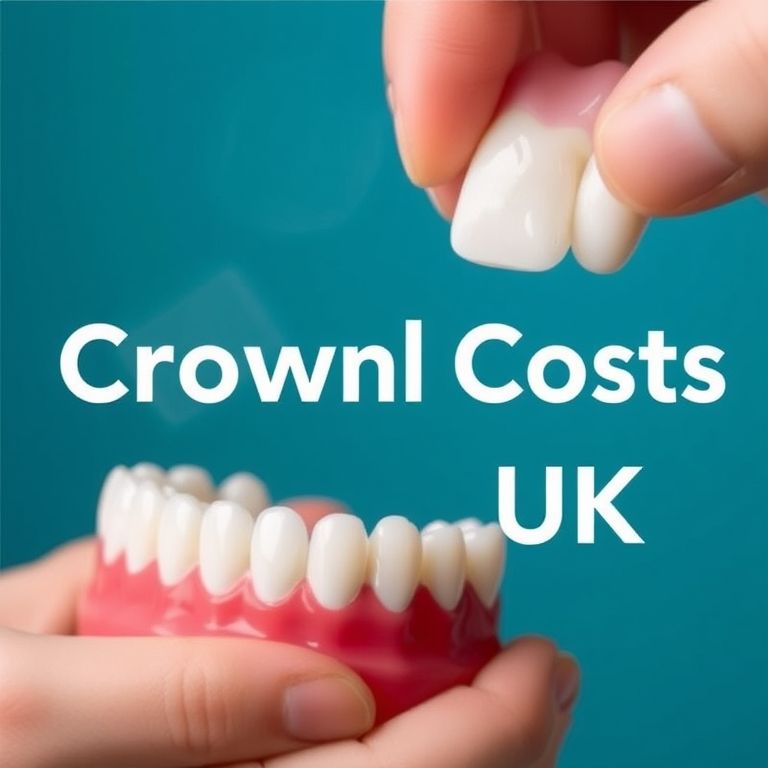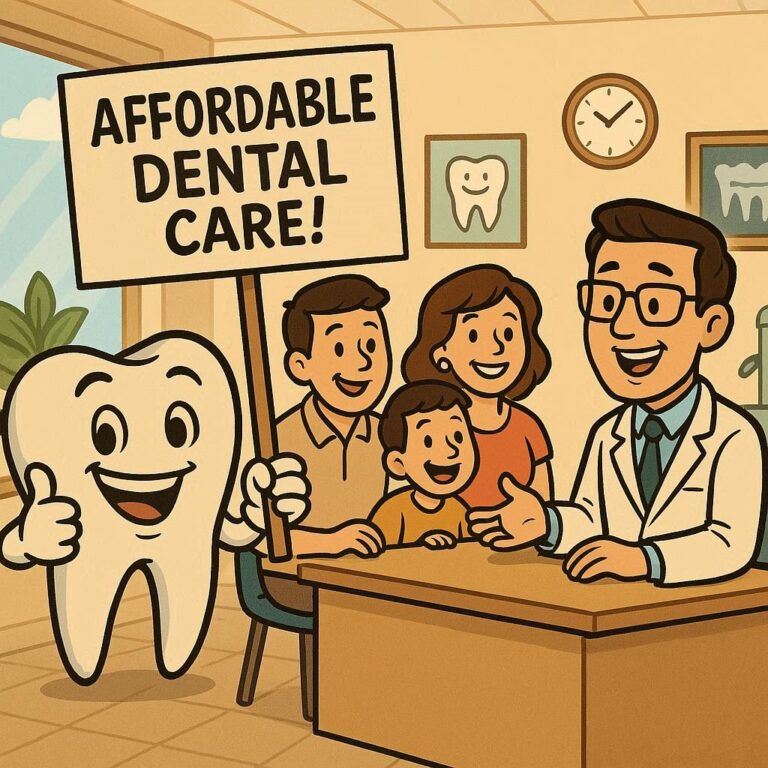Understanding the Cost of Abutments and Crowns in Dental Implants: A Comprehensive Guide
For many individuals seeking to restore a missing tooth, dental implants offer a welcome solution. These implants are small, screw-like posts surgically placed in the jawbone to act as artificial tooth roots. While implants themselves are a significant investment, the overall cost also encompasses the abutment and crown, essential components for a complete and functional restoration. This article delves into the intricacies of Cost of Abutments and Crowns in Dental Implants, empowering you to make informed decisions about your dental implant journey.

Introduction: The Allure of Dental Implants and the Breakdown of Costs
A dazzling smile and a full set of teeth not only enhance facial aesthetics but also play a crucial role in oral health and overall well-being. Missing teeth can lead to difficulty chewing, speaking, and maintaining proper oral hygiene. Dental implants address these concerns by providing a stable, long-term solution that mimics the function and appearance of natural teeth.
However, the upfront cost of dental implants can be a deterrent for some. It’s essential to understand that the quoted price for a dental implant procedure is not all-encompassing. While the implant itself represents a significant portion of the cost, other factors contribute to the total price tag. Two critical components, the abutment and the crown, play a vital role in the implant’s functionality and aesthetics, and their costs need to be factored into the equation.
Understanding the Abutment: The Connector Between Implant and Crown
The abutment serves as the critical connection between the implanted screw (embedded in the jawbone) and the visible crown (the tooth-shaped restoration). Once the implant integrates with the jawbone, a minor surgical procedure is performed to expose the implant. The abutment, a small post typically made of titanium, is then attached to the implant. This creates a stable foundation for the crown, which will be screwed or cemented onto the abutment.
A Closer Look at Abutment Costs
The cost of an abutment can vary depending on several factors:
- Material: Titanium is the most common and biocompatible material used for abutments due to its strength and durability. However, some dentists may offer zirconia abutments, which can be more aesthetically pleasing, particularly for front teeth, but may come at a slightly higher cost.
- Type of Abutment: There are various abutment designs, each suited for specific clinical situations. For example, some abutments are angled to accommodate the optimal positioning of the crown, especially for teeth located in the front of the mouth. These specialized abutments may incur a slightly higher cost.
- Location: Geographic location can influence the cost of abutments. Generally, urban areas tend to have higher overall dental costs compared to rural areas.
- Dentist’s Expertise and Experience: A dentist’s experience and expertise can play a role in the overall cost. Highly experienced dentists with specialized training in implant dentistry may have slightly higher fees, which may be reflected in the cost of the abutment.
Here’s a table summarizing the typical cost range for abutments:
| Factor | Cost Range |
|---|---|
| Material | $200 – $500 |
| Type of Abutment | Can vary slightly depending on design |
| Location | Can vary slightly depending on geographic area |
| Dentist’s Expertise and Experience | Can vary slightly depending on dentist’s qualifications |
The Crown: The Visible Touch and a Major Cost Factor
The crown is the visible portion of the dental implant, replicating the natural tooth structure above the gum line. Crowns are custom-made to match the size, shape, and color of surrounding teeth, ensuring a natural and aesthetically pleasing appearance. The material used for the crown significantly impacts its cost and aesthetics.
Exploring Crown Materials and Their Impact on Cost
- Metal Crowns: These are the most durable and affordable option, typically made from a combination of metal alloys. However, their metallic appearance may not be ideal for front teeth.
- Porcelain-Fused-to-Metal (PFM) Crowns: These crowns offer a good balance between affordability and aesthetics. They have a metal base covered in porcelain, providing strength and a more natural look than metal crowns. They are a popular choice for both front and back teeth.
- All-Zirconia Crowns: These crowns are made entirely from zirconia, a strong and biocompatible ceramic material. They offer the most natural-looking option, especially for front teeth, due to their ability to mimic the light-reflecting properties of natural teeth. However, they are typically the most expensive type of crown.
Here’s a table summarizing the typical cost range for different crown materials:
| Material | Cost Range | Advantages | Disadvantages |
|---|---|---|---|
| Metal Crowns | $500 – $1,000 | Most |
Additional Factors Affecting Abutment and Crown Costs
Beyond the material and type of abutment and crown, several other factors can influence the overall cost:
- Complexity of the Case: Simple implant placements in areas with good bone density typically require less complex procedures, leading to potentially lower costs for both abutments and crowns. However, complex cases involving bone grafting, multiple implants, or immediate implant placement (placing the implant and abutment immediately after tooth extraction) may necessitate additional procedures and materials, increasing the overall cost.
- Dental Lab Fees: Dental labs fabricate the custom abutments and crowns based on specifications provided by the dentist. The lab’s location, expertise, and materials used can influence the final cost.
- Dental Insurance Coverage: While dental insurance typically doesn’t cover the entire cost of dental implants, some plans may offer partial coverage for certain procedures like abutments or crowns. It’s crucial to check with your insurance provider to understand your specific coverage details.
Strategies for Managing Abutment and Crown Costs
Knowing the factors influencing abutment and crown costs empowers you to explore strategies for managing these expenses:
- Consultation and Price Transparency: Schedule consultations with several experienced dentists who specialize in implant dentistry. Discuss their treatment approach, the materials they typically use for abutments and crowns, and their associated costs. Obtain a detailed breakdown of the estimated costs for the entire implant procedure, including the abutment and crown.
- Exploring Alternative Materials: While some materials offer superior aesthetics, discussing alternative crown materials with your dentist may be possible. For example, a PFM crown might be a cost-effective option for a back tooth, while an all-zirconia crown might be prioritized for a front tooth where aesthetics are crucial.
- Considering Dental Insurance: If you have dental insurance, maximize its benefits. Thoroughly understand your coverage for implant procedures, abutments, and crowns.
- Payment Plans and Financing Options: Many dental practices offer flexible payment plans or financing options to help patients manage the cost of dental implants. Explore these options to make the treatment more affordable.
Conclusion
Dental implants offer a long-lasting and functionally superior solution for replacing missing teeth. While the upfront cost can be a concern, understanding the breakdown of costs associated with abutments and crowns empowers you to make informed decisions. Consulting with experienced dentists, exploring alternative materials, maximizing insurance benefits, and considering financing options can help you achieve a beautiful smile with dental implants without breaking the bank.
Frequently Asked Questions (FAQs)
- Can I get a same-day crown on a dental implant?
In some cases, dentists may offer same-day crowns for dental implants using advanced technology like computer-aided design/computer-aided manufacturing (CAD/CAM). However, this approach may come at an additional cost. Traditional methods typically involve a separate appointment for crown placement after the abutment has healed.
- How long do abutments and crowns typically last?
With proper care and maintenance, abutments and crowns can last for many years, often exceeding 15 years. Good oral hygiene practices like regular brushing, flossing, and professional dental cleanings are crucial for their longevity.
- What are the risks associated with abutments and crowns?
Like any dental procedure, there are potential risks associated with abutments and crowns. These can include infection, screw loosening, chipping or fracturing of the crown, and allergic reactions to certain materials. Discussing these risks with your dentist beforehand is essential.
Additional Resources
- American Academy of Implant Dentistry: https://www.aaid.com/
- American Dental Association: https://www.ada.org/en/resources/practice/dental-standards/dental-standards-executive-summaries/dental-implants
- National Institute of Dental and Craniofacial Research: https://www.ncbi.nlm.nih.gov/books/NBK470448/
Disclaimer: This article provides general information only and does not constitute dental advice. Please consult with a qualified dentist to discuss your specific implant treatment needs and costs.


